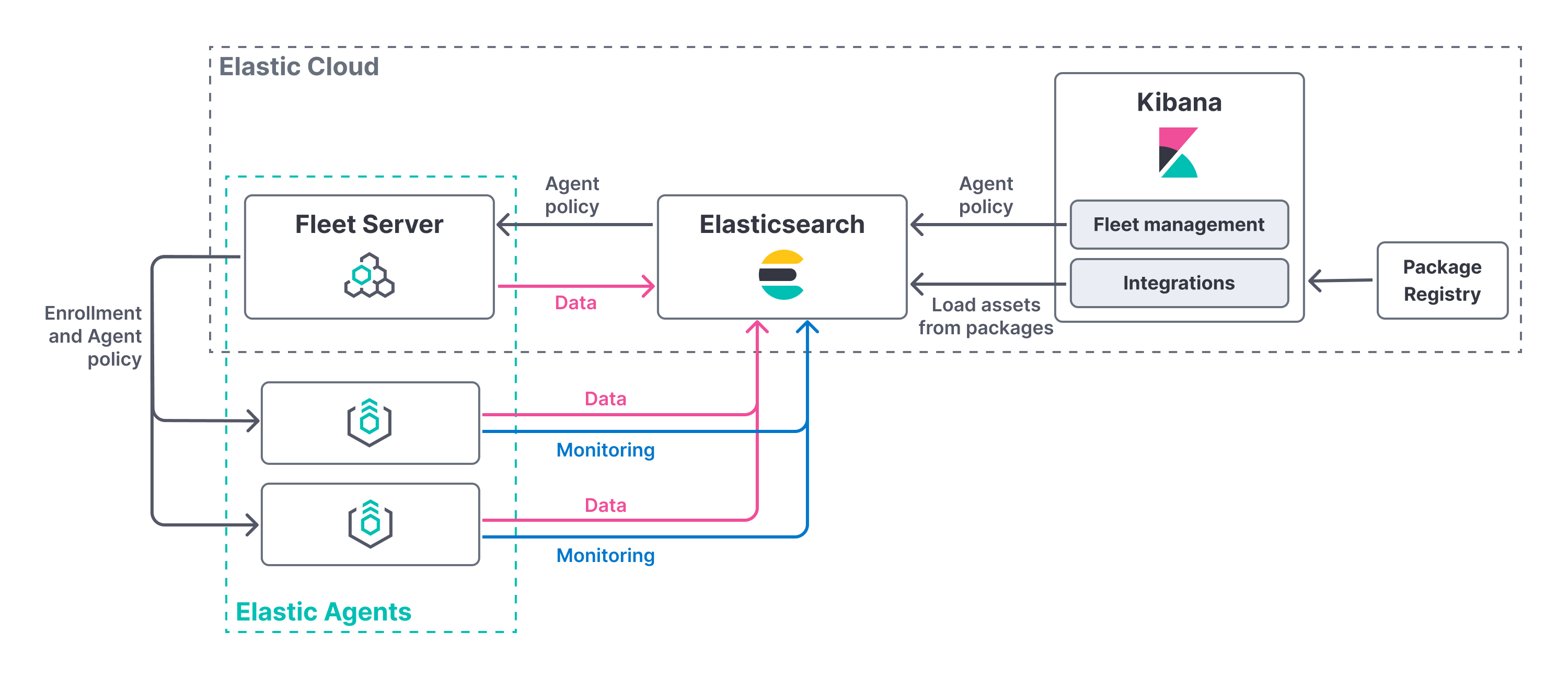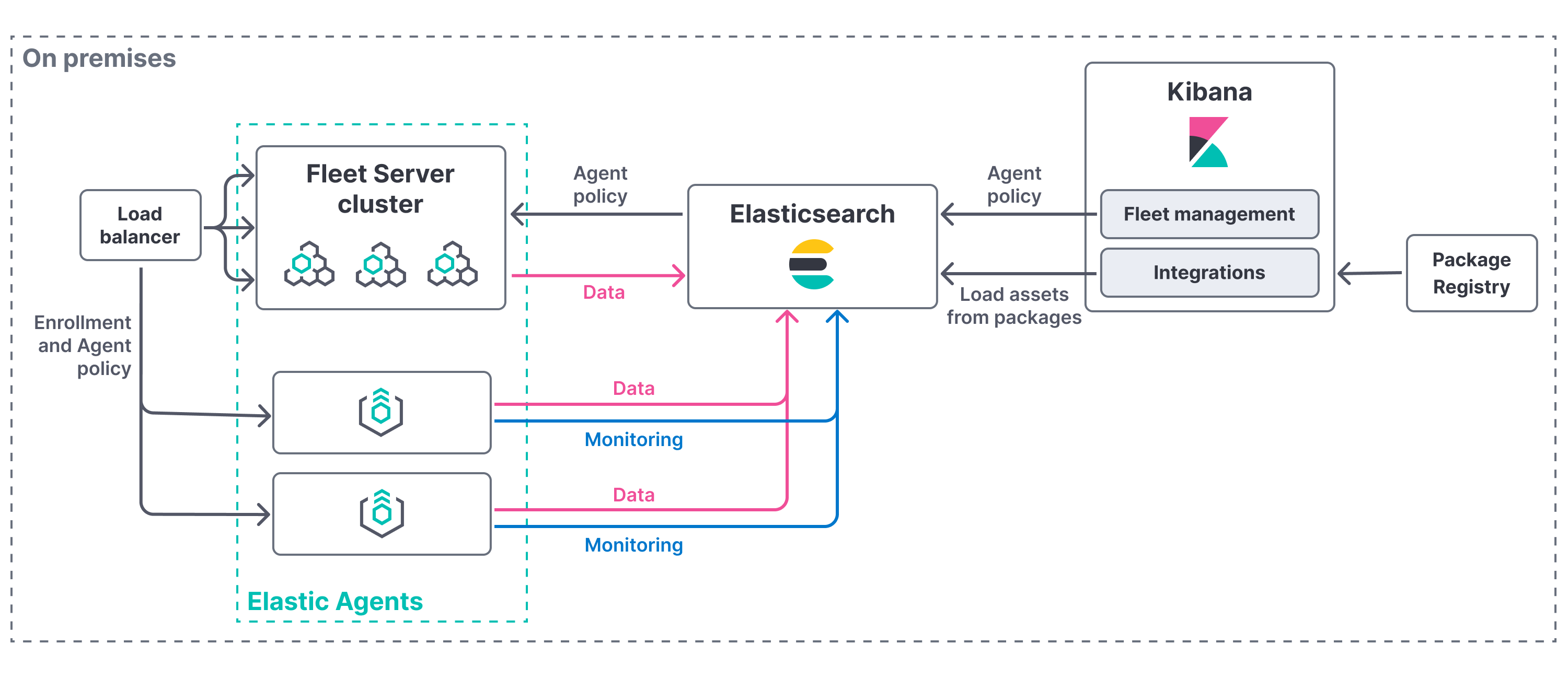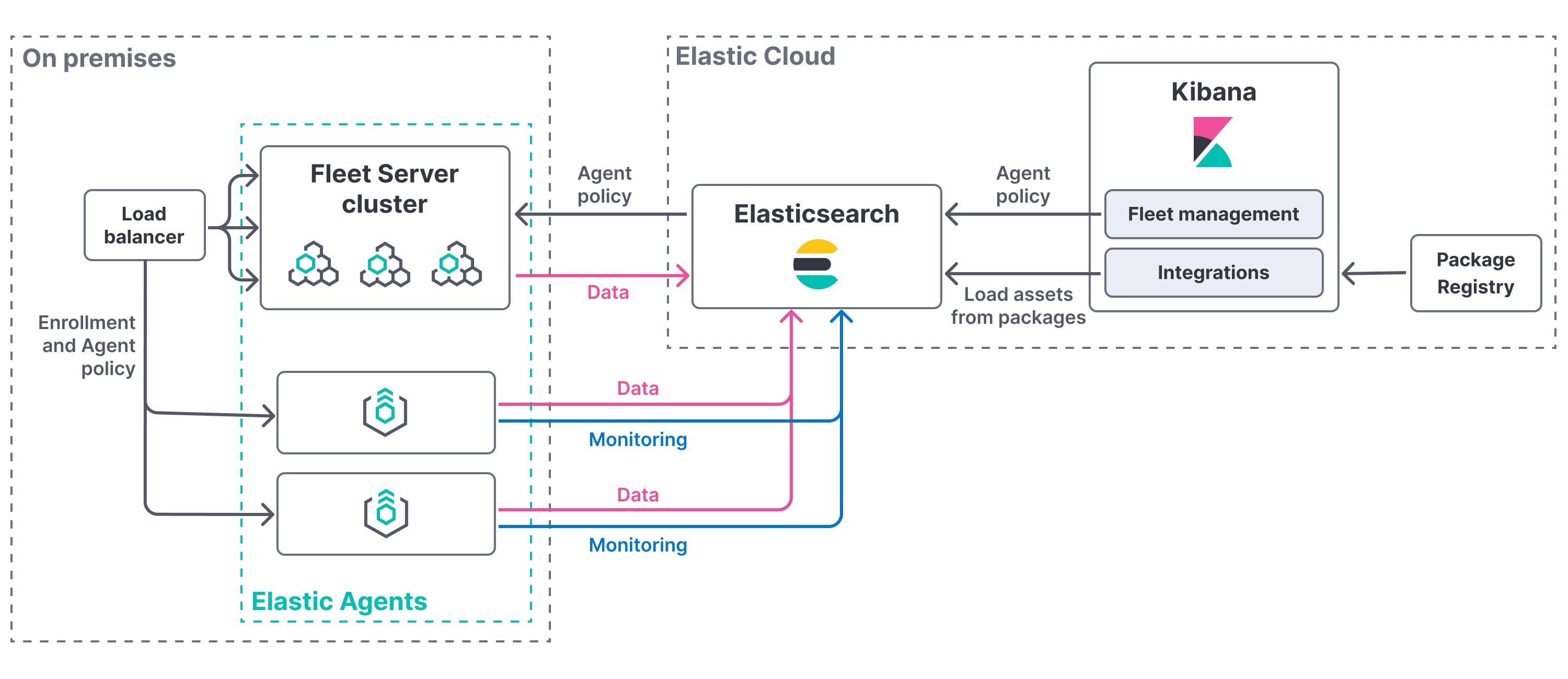Add a Fleet Server
editAdd a Fleet Server
editTo use Fleet for central management, a Fleet Server must be running and accessible to your hosts. There are a few approaches you can take when deploying Fleet Server:
- Provision Fleet Server on Elastic Cloud as part of the hosted Elasticsearch Service. Elastic manages both Fleet Server and Elasticsearch.
- Deploy Fleet Server on-premises to work with Elasticsearch running on-premises. You self-manage both Fleet Server and Elasticsearch.
- Deploy Fleet Server on-premises to work with a hosted Elasticsearch Service. You manage Fleet Server and Elastic manages Elasticsearch.
Read more about each to choose the best approach for your situation.
Provision Fleet Server on Elastic Cloud
editFleet Server can be provisioned and hosted on Elastic Cloud. In this case, when the deployment is created, a highly available set of Fleet Servers is automatically deployed.
This approach might be right for you if you want to reduce on-prem compute resources and you’d like Elastic to take care of provisioning and life cycle management of your deployment.
With this approach, multiple Fleet Servers are automatically provisioned to satisfy the chosen instance size (instance sizes are modified to satisfy the scale requirement). You can also choose the resources allocated to each Fleet Server and whether you want each Fleet Server to be deployed in multiple availability zones. If you choose multiple availability zones to address your fault-tolerance requirements, those instances are also utilized to balance the load.
This approach might not be right for you if you have restrictions on connectivity to the internet.
For step-by-step instructions, go to Deploy on Elastic Cloud.

Deploy Fleet Server on-premises
editAlternatively, you can deploy Fleet Server on-premises and manage it yourself. In this deployment model, you are responsible for high-availability, fault-tolerance, and lifecycle management of Fleet Server.
This approach might be right for you if you would like to limit the control plane traffic out of your data center or have requirements for fully air-gapped operations. For example, you might take this approach if you need to satisfy data governance requirements or you want agents to only have access to a private segmented network.
This approach might not be right for you if you don’t want to manage the life cycle of your Elastic environment and instead would like that to be handled by Elastic.
When using this approach, it’s recommended that you provision multiple instances of the Fleet Server and use a load balancer to better scale the deployment. You also have the option to use your organization’s certificate to establish a secure connection from Fleet Server to Elasticsearch.
For step-by-step instructions, go to Deploy on-premises and self-managed.

Deploy Fleet Server on-premises to work with a hosted Elasticsearch Service
editAnother approach is to deploy a cluster of Fleet Servers on-premises and connect them back to Elastic Cloud with access to Elasticsearch and Kibana. In this deployment model, you are responsible for high-availability, fault-tolerance, and lifecycle management of Fleet Server.
This approach might be right for you if you would like to limit the control plane traffic out of your data center. For example, you might take this approach if you are a managed service provider or a larger enterprise that segregates its networks.
This approach might not be right for you if you don’t want to manage the life cycle of an extra compute resource in your environment for Fleet Server to reside on.
For step-by-step instructions, go to Deploy Fleet Server on-premises and Elasticsearch on Cloud.
